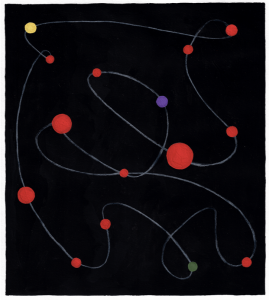- Eleonora Usseglio Prinsi looks at the Gold Lion winning project at this year’s Biennale di Venezia
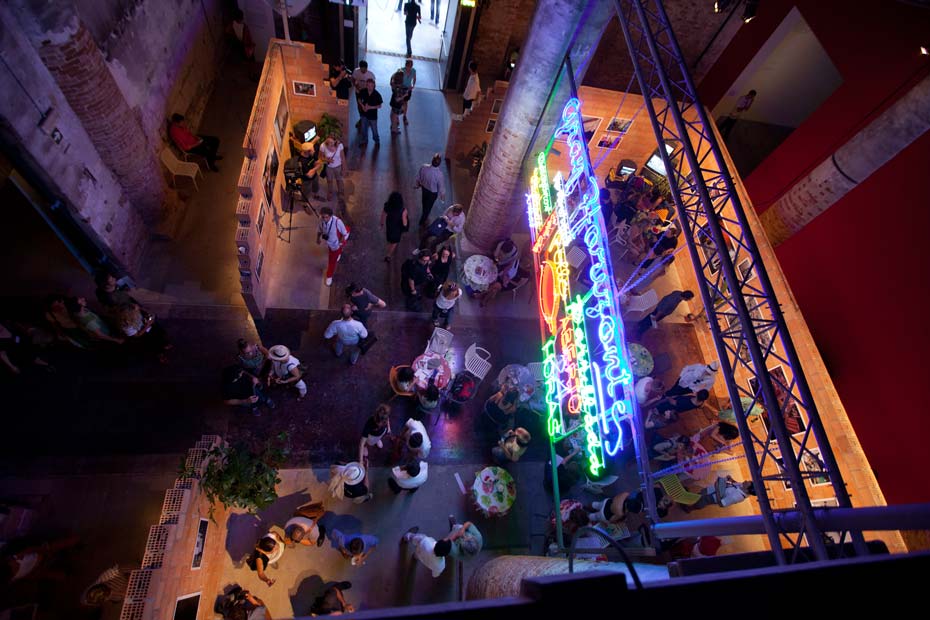 Above: Gran Horizonte Pavilion, la Biennale di Venezia. Photograph courtesy of U-TT Archives Daniel Schwartz
Above: Gran Horizonte Pavilion, la Biennale di Venezia. Photograph courtesy of U-TT Archives Daniel SchwartzA big neon restaurant sign, good food and cheerful music — this is Gran Horizonte, the installation curated by Justin McGuirk, design critic for The Guardian and director of Strelka Press and Urban Think Tank, the multidisciplinary design studio, who together won the Golden Lion for best international installation at the Venice Biennale in 2012.The space hosts the research project developed in Caracas into the biggest vertical slum in the world: Torre David.
Gran Horizonte symbolizes “the economic south looking towards a political equator that divides it from the wealthier northern hemisphere. But it also refers to horizon of Caracas itself, and the view the residents of the tower have out to the slums on the edge of the city, where they would ordinarily be living” explains McGuirk.

- Perhaps, less poetically, it also represents the 24-hour restaurant, which served as the team’s meeting point in Caracas.“The reason we decided to make a restaurant” explains McGuirk, “was not really to recreate the atmosphere of Caracas, but to create a social space in the rarefied atmosphere of the Arsenale. For us, Common Ground wasn’t just about content, it was about the experience of that content.”
A victim of both the 1994 Venezuelan economy crisis, and the death of its developer David Brillembourg in 1993, the office building known as Torre David was abandoned before it was completed. Its unfinished silhouette has punctuated the city’s skyline for almost twenty years.
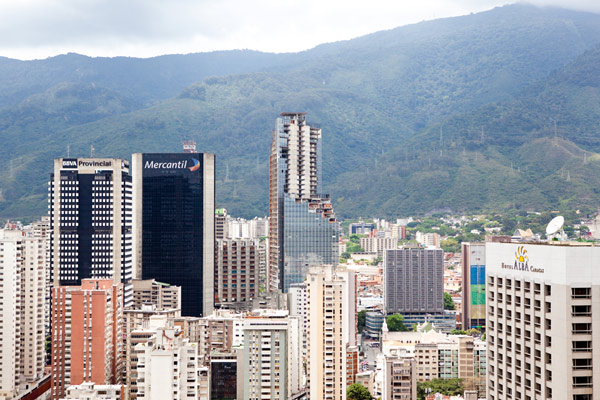 Above: Caracas skyline, dominated by Torre David. Courtesy of U-TT Archives Daniel Schwartz
Above: Caracas skyline, dominated by Torre David. Courtesy of U-TT Archives Daniel Schwartz

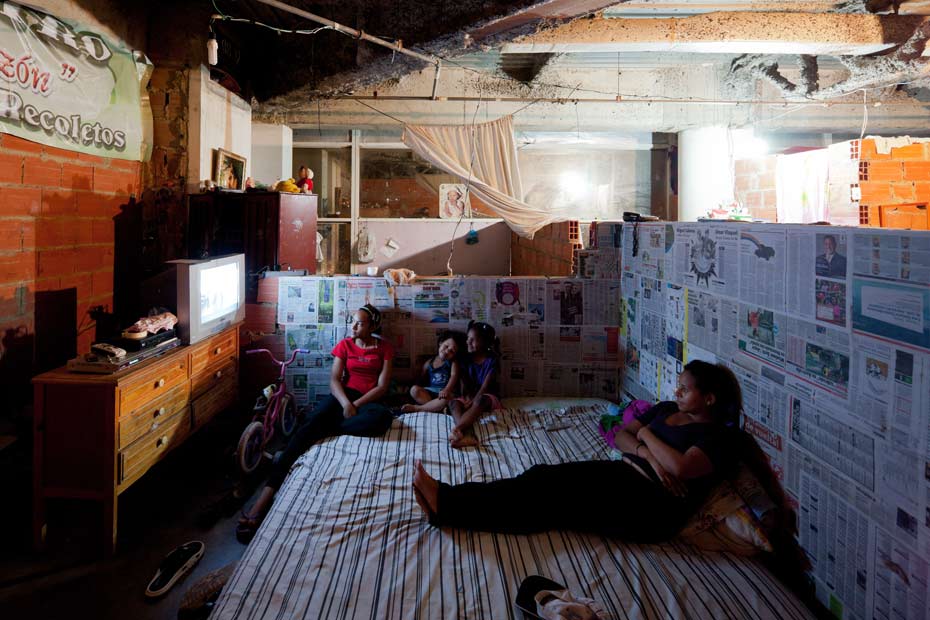 A family relax in their living quarters inside one of Torre David’s apartments. Photograph courtesy of Iwan Baan
A family relax in their living quarters inside one of Torre David’s apartments. Photograph courtesy of Iwan Baan
- .The economic crisis of the early 90s made the severe housing shortage in the country even worse during this period. Increasingly, people started to occupy abandoned spaces like Torre David, ignoring the increasingly precarious safety conditions, lack of lifts and absence of amenities such as water and electricity. Day by day, the space became a real community, housing more than 750 families within its 45 floors. It also hosted commercial ventures, as shops, meeting spaces and sporting facilities opened to meet the needs of its residents.
Right: One of the commercial businesses that have sprung up within Torre David. Photograph courtesy of Iwan Baan
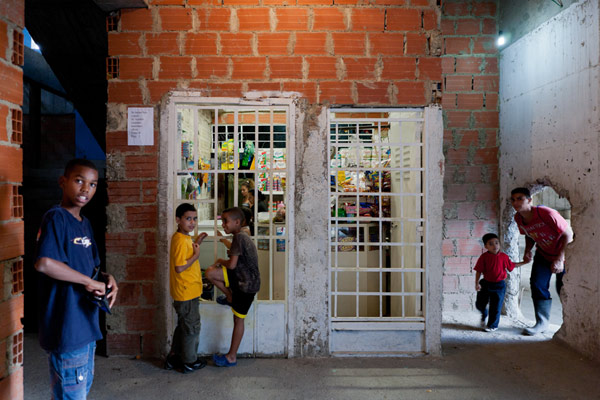
.Alfredo Brillembourg and Hubert Klumpner, directors of Urban Think Tank explain “Torre David presents a remarkable opportunity for experimenting with new strategies to retrofitting existing architecture, incremental city development and mixed-use programming in vertical density. The ways in which residents have adapted the existing structure has provided us with numerous lessons about what does and doesn’t work. Residents have come up with many ideas to solve certain deficiencies, and there is a willingness to leverage this creative impulse to try larger scale experiments, some of which involve making the Torre more autonomous in terms of resource consumption and energy production.”But the pair are quick to point out that Torre David should not be romanticised: “Just like the barrios that compose a large portion of Caracas’ built environment and the slums which are a growing portion of urban development all around the world, there are real problems facing residents in terms of infrastructure, access to long-term financial investment, and of course land tenure. But it is also unique in its verticality and semi-autonomy. We think it could serve as an urban zone or site of experimentation on a large scale, partnering with academia, private firms and government to try out novel approaches to making better vertical architecture.”
 .The project is in contrast to the Venezuela Pavilion, housed in the Giardini. Ciudad socializante vs. Ciudad Alienante (Social City vs. Alienating City) shows, through the sketches of artist Domenico Silvestro the housing plans promoted by the Chavez Government that represents also the chance for the people to be involved in the construction of a new society.This dichotomy is confirmed by McGuirk: “It was the subject of great debate in Venezuela. An older generation of architects were trying to stir up controversy about our show, trying to portray us as supporting illegal occupations and siding with the Chavez regime. This is all untrue… since if anything the tower is a damning indictment of the regime’s failed housing policies.
.The project is in contrast to the Venezuela Pavilion, housed in the Giardini. Ciudad socializante vs. Ciudad Alienante (Social City vs. Alienating City) shows, through the sketches of artist Domenico Silvestro the housing plans promoted by the Chavez Government that represents also the chance for the people to be involved in the construction of a new society.This dichotomy is confirmed by McGuirk: “It was the subject of great debate in Venezuela. An older generation of architects were trying to stir up controversy about our show, trying to portray us as supporting illegal occupations and siding with the Chavez regime. This is all untrue… since if anything the tower is a damning indictment of the regime’s failed housing policies.
.
‘Torre David presents a remarkable opportunity for experimenting with new strategies to retrofitting existing architecture’
.
But mainly these architects seemed to be embarrassed by the idea of the tower representing Venezuelan architecture to the world. And we relished the debate, because that tower has stood there for nearly two decades, and it’s been occupied for the last seven or so years — we had to bring it to Venice to trigger a major debate about it. That’s the power of the biennale.”
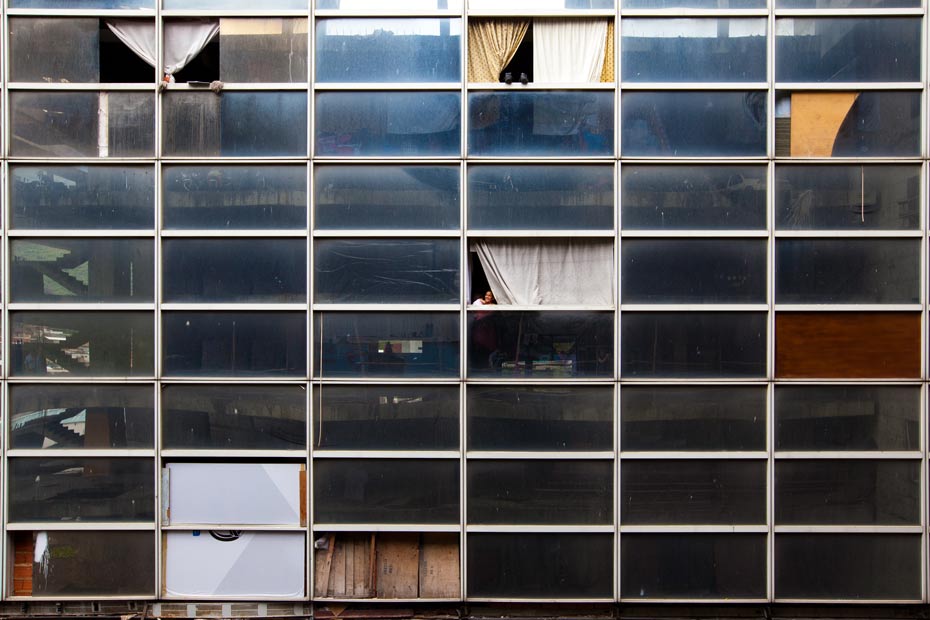 Previous: An exterior shot of Torre David. Courtesy of U-TT Archive
Previous: An exterior shot of Torre David. Courtesy of U-TT Archive
Above: The adapted façade of the building’s exterior. Courtesy of Iwan Baan
- .The debate became even more heated after the award ceremony, when the stance of the Colegio de Arquitectos de Venezuela (CAM) became stricter regarding the project. Their official website recently published a declaration condemning the Gran Horizonte project’s Gold Lion award, and its judging panel stating: “They show how ignorant they are about the problems regarding architecture and inhabitants in our country, and their superficial approach and has de-contextualised the daily drama of life for thousand of homeless.”
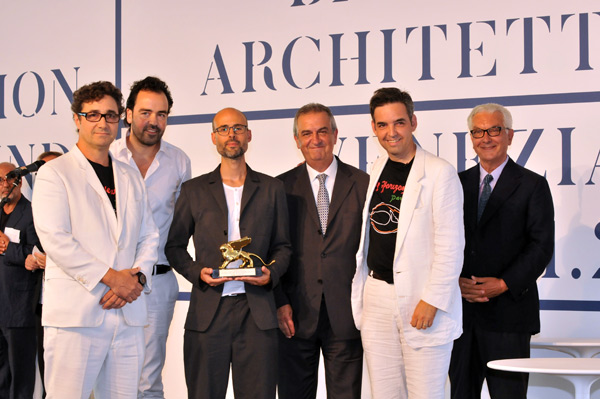
From left to right: Alfredo Brillembourg, Iwan Baan, Justin McGuirk, Lorenzo Ornaghi, Minister of Cultural Heritage and Activities, Hubert Klumpner, Paolo Baratta, President of la Biennale di Venezia. Photography Giorgio Zucchiatti. Courtesy of la Biennale di VeneziaRegardless of political feeling, the superb photographic report by Iwan Baan records 45 stories of the residents living and working in Torre David. These images illustrate that, whilst the living conditions within the building are far from ideal, the sense of community it has created has generated exciting social projects, the likeof which we are unable to find in the social housing of our own European suburbs.
A book about the exhibition, done in collaboration of the ETH Zurich will be released in October, with a feature-length documentaryGran Horizonte set for release next year.
Subscribe to Port Magazine annually and receive each issue to your door.
Get PORT in print

